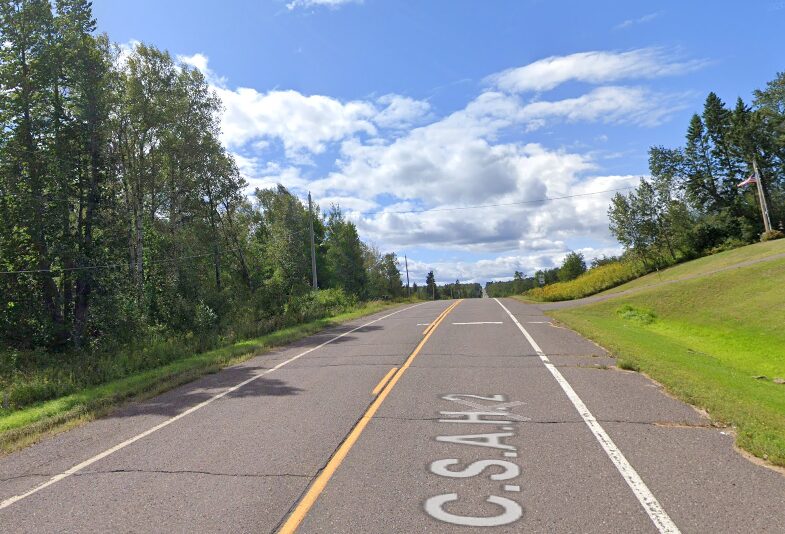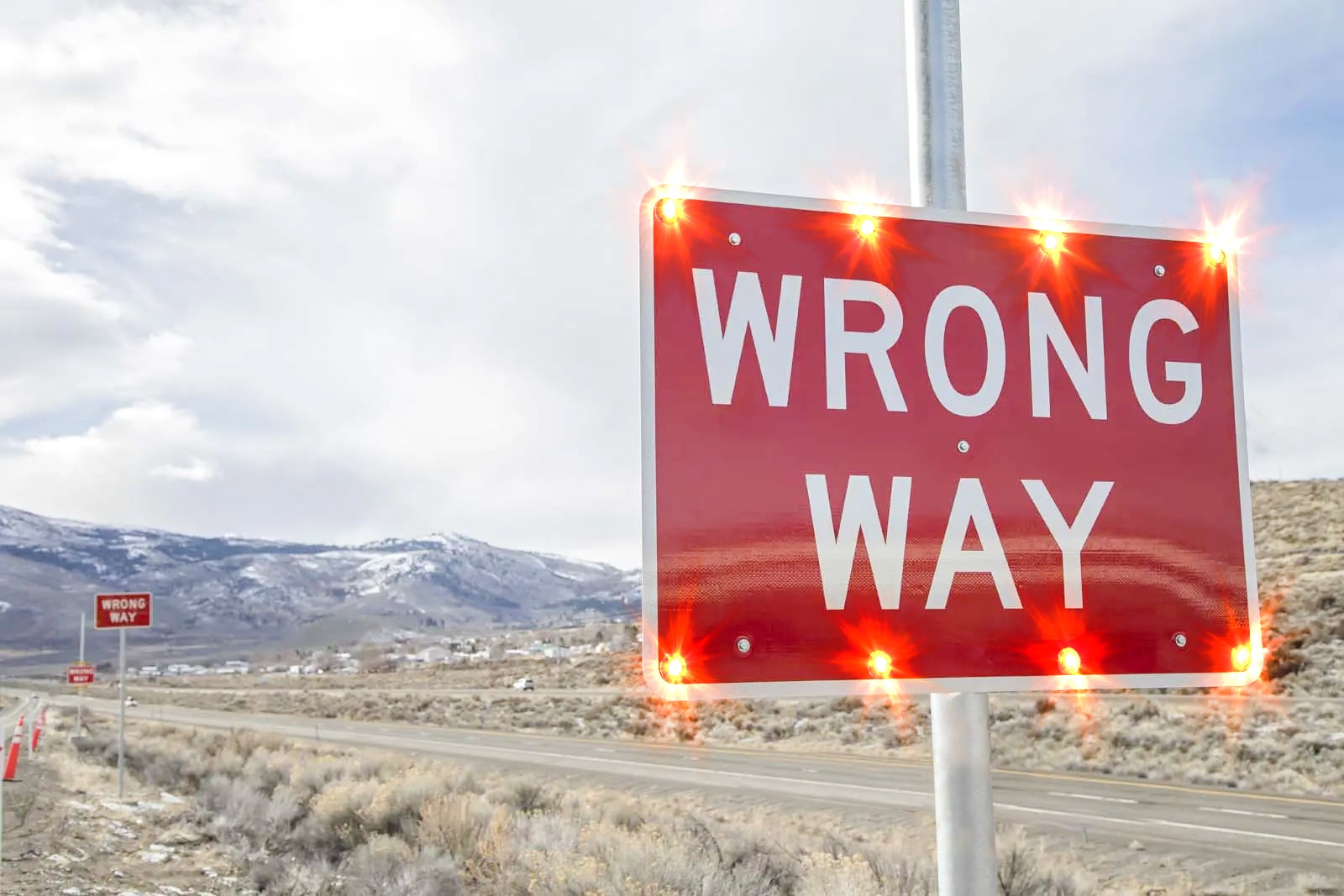Intersection Conflict Warning Systems
Reduce crashes at unsignalized intersections by alerting approaching drivers to potentially conflicting vehicles.

Improve Safety at Unsignalized Intersections
Unsignalized intersections, meaning places where two or more roadways meet but no traffic signal is present, are the most common intersection type in the United States. They also happen to be one of the deadliest: In 2016 they accounted for nearly 70% of intersection-related fatalities, according to the National Highway Traffic Safety Administration’s Fatality Analysis Reporting System.
These intersections tend to be found predominantly in rural and remote areas, where traffic volumes are low and speeds are high. Vertical and horizontal curves can make it dangerous for drivers on secondary roads to cross or turn onto higher-speed through lanes, and conveying information to approaching drivers about intersection conditions can be difficult using static signs, particularly during adverse weather.
Fortunately, they aren’t the only option. Intersection Conflict Warning Systems (ICWS) like Carmanah’s use radar-triggered beacons and/or LED-enhanced signs to provide dynamic alerts to drivers approaching on either the high-speed mainline, stop-controlled crossroad, or both. These low-cost, easy-to-install systems can be added to existing signage and are proven to be highly effective at improving safety at high-conflict locations. Before-after studies of ICWS sites have shown crash reductions up to 19%, according to the Federal Highway Administration (FHWA).
Intersection Conflict Warning System Features
- Disrupts “driver autopilot” – The onset of something new—especially flashing lights—is extremely effective at drawing drivers’ eyes and attention.
- Accurate and reliable detection – System uses high-quality/low-power radar to monitor roadways 24 hours a day for vehicles without interfering with other traffic detection systems.
- Highly configurable – Systems can be tailored to a variety of applications and requirements with an array of sign and beacon options as well as adjustable radar zones and settings.
- Precise traffic data – Radar collects and stores detailed traffic data including time, date, and travel speed.
- AC and solar power options – Installation is possible virtually anywhere with off-grid power and a Solar Power Report prepared for every location.
- FHWA/MUTCD compliant – Compliance reduces your risk, meets requirements for federal funding, and provides the benefit of driver familiarity with sign faces, colors, sizes, and shapes.
Research findings
A MoDOT before-and-after study of the safety effectiveness of post-mounted ICWS showed a 28% reduction in total crashes, 72% reduction in severe crashes, 37% reduction in angle crashes, and a 75% reduction in severe angle crashes at the locations with the installation on the major street approach. [source]
A study of ICWS at two-lane intersections in North Carolina found that deployments with alerts on the major road in advance of the intersection and locations with a combination of both major and minor road alerts were the most effective, with Crash Modification Factors (CMFs) for total crashes of 0.68 and 0.75, respectively. [source]
A TTI study on the safety effects of LEDs embedded in STOP signs found a 28.9% reduction in the number of vehicles not fully stopping, as well as a 52.9% reduction in the number of vehicles moving through the intersection without significantly slowing [source]
What does a typical ICWS layout look like?
ICWS are targeted at unsignalized intersections, most commonly thru-stop intersections, where a major high-speed road intersects with a minor local road. The major road is generally uncontrolled (i.e. no signals or signs) while the minor crossroad is controlled with a standard static stop sign. Flashing signs and beacons can be added on one or both these roads to increase driver awareness and minimize the risk of a right-angle crash. Below is a before-and-after example of an ICWS installation in Duluth, MN. [source]
Before
The eastern approach along West Tischer Rd. features a severe vertical curve making it difficult for approaching drivers to see the intersection from a reasonable distance. Because of this, a “BLIND INTERSECTION AHEAD” sign was installed 520 ft. ahead of the intersection with Eagle Lake Road. A reduced speed limit sign was also added ahead of the intersection to try and slow drivers down.


After
To make the intersection safer for traffic travelling from both directions, engineers added three flashing signs and four radar units. The sign for the main road (Tischer) displays the message “CROSS TRAFFIC WHEN FLASHING.” This sign is triggered by two radar detectors on Eagle Lake Rd., installed atop the two stop signs located there. LED-enhanced signs were added to these legs as well, which read “VEHICLE APPROACHING WHEN FLASHING” and are triggered by the two radar units located on Tischer Rd.


Advantages of radar for vehicle detection
Long-range detection
The third party tested radar unit Carmanah uses is ideal for long-range outdoor applications up to 1,000 feet.
Accurate in all weather
Unlike other types of sensors, radar sensors are not affected by conditions like wind, rain, fog, humidity, and high and low temperatures.
Easy to install
No trenching or pavement cutting is required for installation, saving departments time and money, and limiting disruption to road users.
Detailed data
System collects and stores the number of vehicles plus accurate speed data to be used with user-configurable radar zones.
Long-range detection
The third party tested radar unit Carmanah uses is ideal for long-range outdoor applications up to 1,000 feet.
Accurate in all weather
Unlike other types of sensors, radar sensors are not affected by conditions like wind, rain, fog, humidity, and high and low temperatures.
Easy to install
No trenching or pavement cutting is required for installation, saving departments time and money, and limiting disruption to road users.


Get to know Carmanah’s LED-enhanced signs
Carmanah’s ICWS are most commonly configured with our LED-enhanced signs, which are embedded with the same high-intensity LEDs used in our best-selling Rectangular Rapid Flashing Beacons (RRFB) and powered by the most efficient solar engine on the market.
Our engineered LED enhanced sign components are made from sturdy, UV-resistant polycarbonate then third-party tested for durability and reliability. The intelligent energy management system (EMS) enables peak efficiency in a fully integrated low-profile, weather-proof design. A cost-effective safety countermeasure proven to increase rates of driving compliance.
Get in touch
Have questions or need assistance? Connect with sales for product inquiries and quotes, support for technical issues, or visit the product support center for self-service resources.